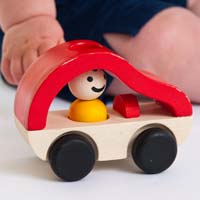March Break Solutions

Sometimes we feel we need to fill every minute of our children's day with FUN. March Break doesn’t need to be a frenzy of planning, organizing and rushing from one activity to the next. Kids like–and need–some downtime. “You can use this time to teach your children some new skills, develop their curiosity and help them learn to cope with boredom by tapping into their creativity,” says parenting expert Ann Douglas. Here’s how:
Six ways to make March Break fun and stress-free
1. It’s okay if your kids are bored. Allow your child to experience a healthy amount of boredom, Douglas says. “If you constantly rush in to alleviate that boredom, your child won't be motivated to learn how to find ways to entertain himself.”
2. Give yourself a break too. Don't make the mistake of assuming it's your job to be a full-time, live-in entertainment director, she says. “One of the most important things you can teach your child is how to find his own fun–and how to discover ways of entertaining himself.”
Douglas is a big fan of the “exploding craft cupboard,” crammed full of miscellaneous craft supplies (including random treasures like unused takeout straws, empty cereal boxes and old magazines) your child can go to on a day you just don’t feel like planning another elaborate family activity.
3. Pare it down. Don't have too much stuff around. Children, like adults, can be paralyzed by too many choices, Douglas says. She also recommends organizing the play materials that you do have on hand in a way that makes it easy for your child to see what options are on the play menu.
If your child responds well to visual cues, you might even create a play idea book, she adds. (Take photos of your child engaged in various activities and use these photos to create a book of play ideas. You can keep adding to this idea book over time–and even get your child involved in taking some of the photos of his favourite activities.)
4. Let kids figure it out. “When your child comes to you and says, ‘I'm bored,’ don't solve the boredom problem for him,” Douglas says. “Instead, help him develop skills for dealing with that problem. Say, ‘Hmmm’ and see what he says next.”
It also helps to encourage him to think about what he feels like doing, she says. For instance, does his body feel like moving? Do his hands feel like creating something? Does his voice feel like singing? Do his eyes feel like looking at, or reading, a book? Do his ears feel like listening to music? “Over time, he will learn to go through this process in his own head when he is looking for ways to entertain himself.”
5. Variety is the spice of life: Make it possible for your child to engage in a variety of different types of play: creative play, imaginative play, motor-skills activities (both gross motor and fine motor), as well as play involving other children.
And think about ways to minimize the amount of help your child needs to seek from you. (If a toy or puzzle is stored in a frustrating container, transplant it to another, easier to open container, for example.)
6. Have fun. Finally, don't forget to spend plenty of one-on-one time with your child, Douglas says. “You're not trying to ease out of your all-important role as your child's first teacher, you're simply trying to encourage a healthy balance of independent play and learning and time spent playing and learning with a parent or other adult.” Keeping that in mind will ensure the March Break is fun for everyone.
Meet our expert
Ann Douglas is a mother of four and the author of numerous books about pregnancy and parenting, including The Mother of All Pregnancy Books and The Mother of All Parenting Books. She writes "The Mother of All Baby Columns" for The Toronto Star.
anndouglas.ca
